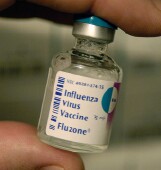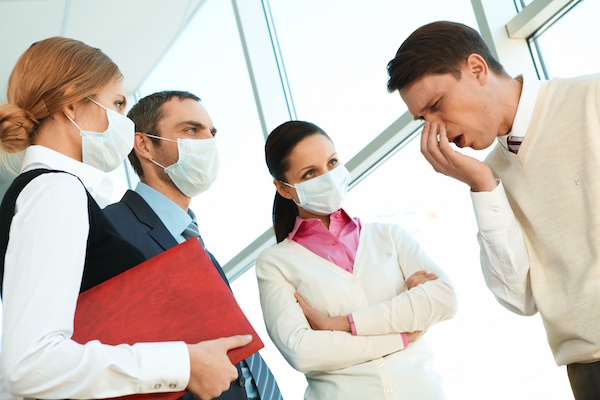
TUESDAY, Dec. 15 (HealthDay News) — The outbreak of the pandemic H1N1 swine flu has revealed serious flaws in the nation’s ability to respond to public health emergencies, a new report says.
The report, prepared by the Trust for America’s Health and the Robert Wood Johnson Foundation, also finds the dire economy has strained the already underfunded public health system.
“The 2009 H1N1 outbreak is the latest in a series of reminders — from September 11 to the subsequent anthrax attacks to hurricane Katrina — that the nation’s public health system needs to be ready to respond to a major health crisis,” Richard Hamburg, deputy director of the Trust for America’s Health, said during a Tuesday morning teleconference.
“The H1N1 flu outbreak vividly exposed serious underlying gaps in the nation’s ability to respond to public health emergencies,” he said. “On top of that, trying to respond to the pandemic in the middle of the worst economic climate since the Great Depression meant that we were asking public health officials to try to do more with less as budgets, and staff were stretched well beyond their limits.”
The United States tends to respond to the crisis of the moment, but fails to commit to fund and enact programs to ensure ongoing public safety, Hamburg said.
“This Band-Aid approach to preparedness needs to change,” he added.
According to the report, 20 states scored six or less on 10 indicators of emergency preparedness, and almost two-thirds of the states scored seven or less.
Arkansas, Delaware, New York, North Carolina, North Dakota, Oklahoma, Texas and Vermont scored the highest with nine out of 10. Montana scored the lowest — three out of 10.
Money spent over the past several years for public health preparedness did improve the nation’s ability to meet the challenges of the H1N1 swine flu, the report found, but years of underfunding meant that many public health systems were not fully prepared.
Specifically, the authors cited “a lack of real-time coordinated disease surveillance and laboratory testing, outdated vaccine production capabilities, limited hospital surge capacity, and a shrinking public health workforce.”
Moreover, half of the states saw their funding for public health cut, and federal funding for preparedness has been reduced by 27 percent since 2005.
The report — titled Ready or Not? Protecting the Public’s Health From Diseases, Disasters, and Bioterrorism — also found that:
- 27 states cut funding for public health from 2007 to 2009.
- 13 states have bought less than 50 percent of their share of antiviral drugs for use during a flu pandemic.
- 14 states can’t assure quick pick-up and delivery of laboratory samples all day every day.
- 11 states and the District of Columbia don’t have enough laboratory personnel to work the needed hours in response to a disease outbreak.
- 30 states don’t require childcare facilities to have a multi-hazard written evacuation and relocation plan.
“We are a very long way from being in a place where we can say that the United States of America is secure and safe from a wide range of major threats,” Dr. Irwin Redlener, director of the National Center for Disaster Preparedness and an associate dean at the Mailman School of Public Health at Columbia University in New York City, said at the teleconference.
Nationwide, budget problems have led to the layoff of some 15,000 public health workers, and 50 percent of state health departments expect to lay off more people in the coming months, Redlener noted.
Given these cutbacks, Redlener said it’s fortunate that the H1N1 swine flu is mild for most people. “One shudders to think how serious this could have been if the virus had been a little different or if we had a second disaster on top of a pandemic — we would have really been in trouble,” he said.
To avoid a future crisis, the report calls for more public health funding and recommends that the response to the H1N1 swine flu pandemic be studied to identify areas that need improvement.
States should also increase public information efforts; reach out to poor minority residents who may get overlooked in a health emergency; work harder to reach at-risk populations; and educate the public about the safety and benefits of vaccines, the report said.
More information
For more information on public health preparedness, visit the U.S. Centers for Disease Control and Prevention.

